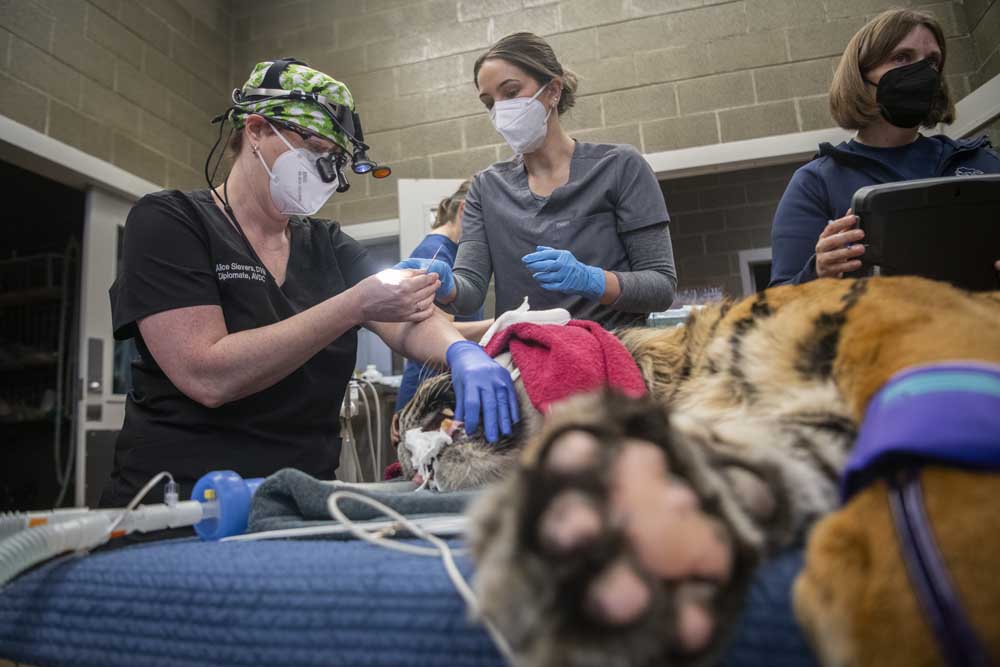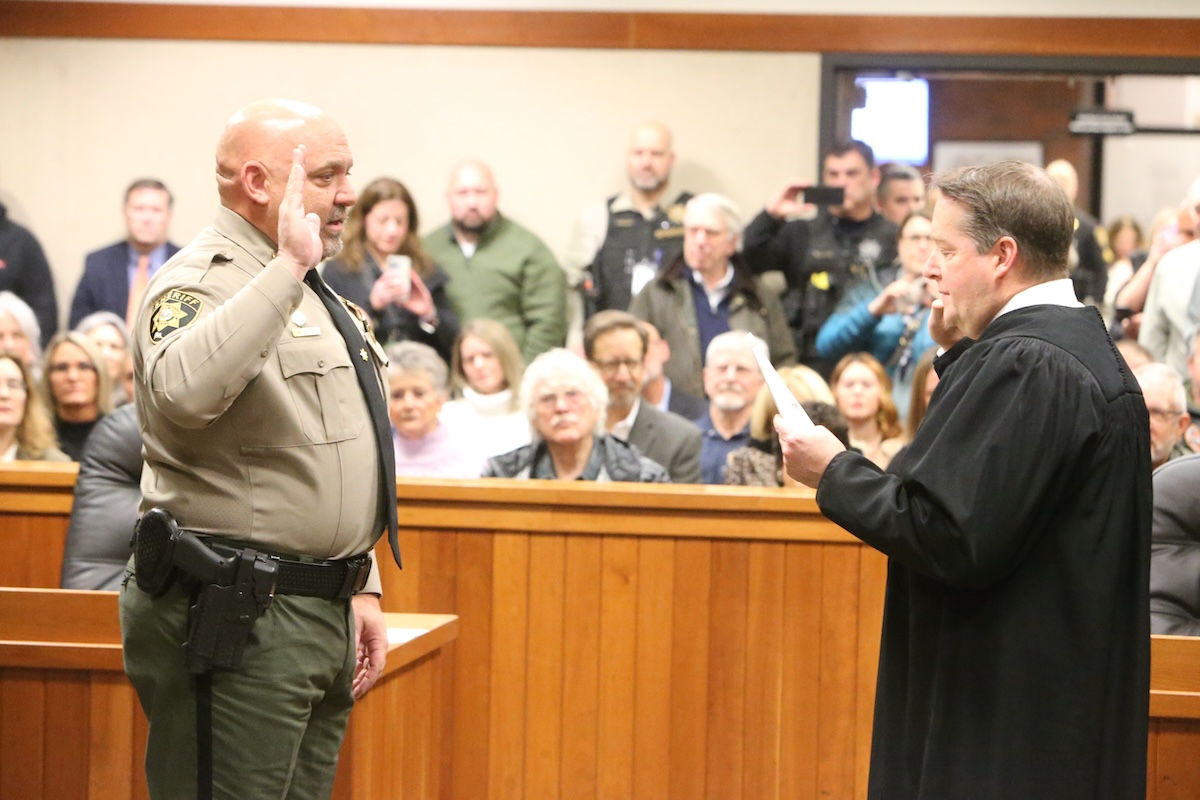Performing a root canal on a rare tiger requires an unusual dentist
Published 4:18 pm Wednesday, February 7, 2024

- Dr. Alice Sievers and Dr. Kadie Anderson examine Sanjiv the tiger on Jan. 5.
With fewer than 500 individuals left in the wild today, plus a few hundred more in zoos, the Sumatran tiger is a rare and critically endangered species.
Dr. Alice Sievers represents a rare group too. As a board-certified veterinary dentist and oral surgeon, she’s likely one of about 300 people on the planet, which is her own informed estimation, with the training and skill needed to perform a root canal procedure on such an enormous, exotic cat.
A few weeks ago, Pet Dental Specialists, the east Vancouver clinic that Sievers co-owns, took a call for help from Tacoma’s Point Defiance Zoo & Aquarium regarding Sanjiv, a 12-year-old Sumatran tiger who’d fractured a canine tooth — one of those really long, sharp, scary fangs — on a chew toy. He broke about an inch off the tooth.
“He really did a number on it,” Sievers said.
While Point Defiance has veterinarians on staff, none is qualified to perform dental surgery on exotic animals
Dental decision
Sievers was a U.S. Forest Service kid who grew up moving around Oregon until her family settled in Douglas County, she said. While animals were always part of her youth, Sievers didn’t see them as a potential vocation until she majored in biology at Southern Oregon University.
“I realized I really liked my interactions with animals and caring for them,” she said.
Sievers studied veterinary medicine at Oregon State University, and also at Washington State University, through a cooperative program. Since on-the-job experience was mandatory, she grabbed what relevant employment she could and wound up cleaning kennels, the very lowest rung of the animal-care ladder.
Sievers said she was always interested in exotic animals, but as the owner of a general veterinary practice in Ashland, dogs and cats were her bread and butter for about a decade. Meanwhile, though, she pursued continuing professional education toward a specialization in veterinary dentistry.
Sievers trained as a veterinary dentist for five years while maintaining her general practice, the Bear Creek Animal Clinic in Ashland. Eventually she moved to Ridgefield, Washington, so she and Dr. Kevin Stepaniuk — a longtime colleague and mentor, and now her new neighbor — could join forces and launch Pet Dental Specialists in 2022.
“I love doing oral surgery because it has a huge impact,” Sievers said. “It’s more dramatic than anything else I did with animals. People come back after a … procedure saying they have a new and improved relationship with their dog or cat.”
Sievers and Stepaniuk are both certified members of the American Veterinary Dental College, which has about 230 members. There’s a smaller European equivalent. In all, Sievers figures, she’s one of a few hundred people in the world who are qualified to perform dental surgery on a tiger.
Shivers
After calling Pet Dental Specialists about Sanjiv, the Point Defiance Zoo forwarded a set of X-rays from his last dental exam, which was conducted under anesthesia by the zoo’s own veterinary team. With X-rays to study, Sievers said, she was able to work out a treatment plan and pack the right specialized equipment.
She went to Tacoma Jan. 5 with Pet Dental veterinary technicians Heather Hagedorn and Taylor Parker and assistant Sharon Ghormley. Stepaniuk didn’t go.
Sanjiv is Sievers’ third tiger patient and her sixth large cat, she said. He was already anesthetized into a deep slumber when the Pet Dental Team arrived at the zoo’s on-site medical facility.
Even so, approaching an immense orange-and-black beast of the jungle never fails to bring on the shivers, Sievers said. Sanjiv is nearly 300 pounds of fearsome muscle and bone, approximately 10 feet long and with teeth about 10 times as large as a human’s.
“It’s quite a thrill. His nose is larger than my hand. His tooth is this thick,” she said, forming an OK sign with thumb and forefinger.
The procedure took about 90 minutes, Sievers said. Surgery is a combination of individual focus and teamwork, and Sievers usually talks her way through a procedure so her assistants know exactly what’s going on and what’s likely to happen next, she said.
She’s always watching out for complications like too much bleeding, she said. But Sanjiv’s procedure went fine.
“Nothing weird happened,” Sievers said. The canine was cleaned out, disinfected, refilled and closed up again.
“It is a shorter, less pointy version of what it was,” Sievers said. “Imagine how long his entire tooth was, from crown to tip, before he broke it.”






